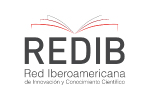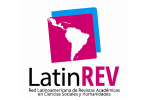Quito and Madrid 1788 – 1828: their culture on divergent roads
DOI:
https://doi.org/10.18537/puc.26.02Keywords:
Secularized University; Kingdom of Quito, Madrid, freedom for thinking and writing 1788-1828; Rodríguez “Verulam of Quito”; flayers and newspapers.Abstract
We consider in this study the two devergent ways of politics and culture of Quito ̶today Ecuador ̶ on the one hand, and Madrid in Spain on the other, concerning the period between 1788 and 1828. These two ways are identical to two opposed courses, relatives to the intellectual and academic formation in both countries during the European ‘Ilustration’, and her going over to Quito, the Spanish Colony in the Andes on the Equator-Line.
Whereas the Americans tried to innovate in order to improve, the Spaniards, in reality, practiced the opposite, for example by the Bourbonical Reforms since 1763, and by reason of the Independence of Northamerica, in 1783. The measures, taken by Spain in Quito, remained completely behind the increasing desire of the ‘quiteños’, to know and to read about modern culture, about experimental physics, about modern economy, and all these subjects in relation to the geography of their country , that they began to nominate ‘Patria’. These Americans formed the beginning of secular and American culture in Quito, Ecuador: it magnified more and more the desire of the habitants, to take their politics in their own hands, and this all the more Spain answered in the negative to those questions of commercial and cultural transformation, in practice. Each of the two cultures, therefore, had to develop herself, opening by this way in America, the obvious consequence: the Independence of Quito.
Downloads
References
Addy, George M. The Enlightenment in the University of Salamanca. Durham, 1966.
Bolufer Peruga, Mónica. Mujeres e Ilustración. La construcción de la Feminidad en la Ilustración española. Valencia: Quiles A. Gr. S.A. 1998, pp. 34-49.
Borrero Vega, Ana Luz. “Fidelidad e Insurgencia en Cuenca durante el período de la Independencia, 1809-1812”, en Memorias del Simposio ‘Bicentenario’. Cuenca: Universidad de Cuenca, 2011: 121-137.
Carnero, Guillermo. “Pedro Montengón (1745-1828). Un poeta entre los siglos”, en Hispanic Review, Vol. 59 núm. 2, Univ. of Pensilvania Press 1991: 125-141.
Fierro Benítez, Rodrigo. La Escritura en la historia de los Pueblos hispanoamericanos. Quito: Casa de la Cultura Ecuatoriana, 1988.
Flórez y Vergara, Mariano (Marqués de Miraflores). Dedicatoria (al Presidente de la Audiencia José Villalengua). Quito: R. de Salazar, 1786.
Herr, Richard. España y la Revolución del siglo XVIII. Madrid: Aguilar, 1964.
Hidalgo-Nistri, Fernando (Comp.) Compendio de la Rebelión de la América. Cartas de Pedro Pérez Muñoz. Quito: Abya-Yala, 1998
Keeding, Ekkehart: “Espejo y las Banderitas de Quito de 1794: !Salva Cruce!”, en BANH Quito, vol. LVII núm. 124, 1974 pp. 252-273; de nuevo en: “Vida y Contribución de Eugenio Espejo 1790-1795”, vol.1 G. Ochoa Dávila, Quito: Crear 2009, pp. 323-352.
Keeding, Ekkehart. Surge la Nación. La Ilustración en la Audiencia de Quito 1725-1812. Quito: Banco Central del Ecuador, 2005.
Keeding, Ekkehart (con María Antonieta Vásquez Hahn): La Revolución en las Tablas. Quito y el Teatro Insurgente 1800/1817. Quito: FONSAL, 2009; Keeding: pp. 97-307: obras de José Mejía en Quito, 1800, y Camilo Henríquez en Buenos Aires, 1817.
Navarro, José Gabriel. La Revolución de Quito del 10 de Agosto de 1809. Quito: Plan Piloto del Ecuador, 1962.
Núñez Sánchez, Jorge (Coord.). Mejía - Portavoz de América (1775-1813), Quito: FONSAL, 2008.
Pérez Muñoz, Pedro. “Cartas”, en Compendio de la rebelión de América. Quito: Abya-Yala 1998 (por Fernando Hidalgo-Nistri, Comp.).
Taxin, Amy. “La Participación de la Mujer en la Independencia. El caso de Manuela Sáenz”, en Procesos N.° 14, Quito: Corporación Editora Nacional, 1999.
Published
How to Cite
Issue
Section
License
Copyright (c) 2015 Ekkehart Keeding

This work is licensed under a Creative Commons Attribution-NonCommercial-ShareAlike 4.0 International License.
Copyright © Autors.

You are free to:
 |
Share — copy and redistribute the material in any medium or format |
 |
Adapt — remix, transform, and build upon the material for any purpose, even commercially. |
Under the following conditions:
 |
Attribution — You must give appropriate credit, provide a link to the licence, and indicate if changes were made. You may do so in any reasonable manner, but not in any way that suggests the licenser endorses you or your use. |
| NonCommercial — You may not use the material for commercial purposes. | |
| ShareAlike — If you remix, transform, or build upon the material, you must distribute your contributions under the same license as the original. |
| No additional restrictions — You may not apply legal terms or technological measures that legally restrict others from doing anything the licence permits. |












